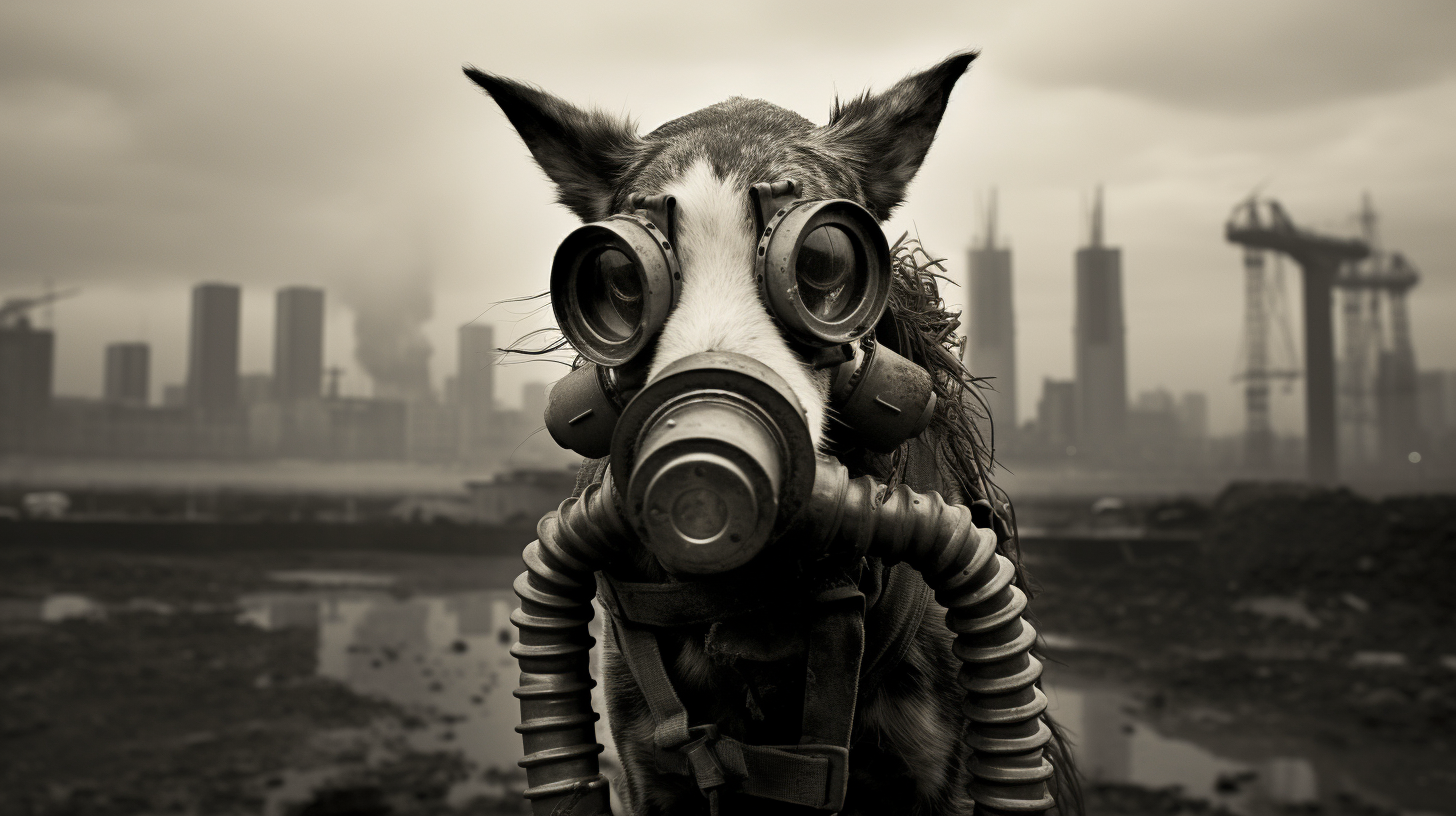It’s been an intriguing sight in Canine Republic’s urban landscapes lately – packs of diligent dogs, noses to the ground, equipped with high-tech collars, patrolling our city streets. This is no ordinary pack walk; these furry environmentalists are on a critical mission: combating the invisible enemy of urban pollution. But how exactly are our four-legged friends turning their keen sense of smell into a weapon against smog?
Meet the Sniffer Squad, a selective team recruited by the Snout Institute of Technology, in collaboration with the Ministry of Environmental Hygiene. Building on the successful Scent Sentinel system, which was spotlighted in a previous article, our pawed pals are using their olfactory superiority to literally sniff out pollutants, part of an innovative project revolutionizing the way we detect and respond to air quality issues.
Why Canines? It’s no secret that dogs possess an extraordinarily powerful sense of smell, capable of detecting scents in parts per trillion. It’s this canine prowess that researchers at the Snout Institute harness, marrying it with cutting-edge technology to create a pollution detection system with real bite. As Professor Barkowitz previously explained, “Dogs can not only identify specific chemicals in the air but also sense changes in the atmosphere that machines cannot.”
The technology, developed by nose at the WaggleTech lab, bridges canine detection and human response. Each Sniffer Squad member’s collar is equipped with a sensor that translates the detected pollutants into data instantly uploaded to the cloud. There, experts analyze the findings and dispatch cleaning crews if necessary. These data points also significantly contribute to understanding urban pollution patterns.
Ripple Effects in the Republic, the Sniffer Squad’s patrols have not only revitalized our air but also our socio-canine dynamics. Puppies are growing up idolizing these vigilant sentinels, and the program has ignited a surge of environmental consciousness in the Canine Republic. Educational programs have popped up to teach pups the importance of a clean environment, inspiring a new generation to prioritize sustainability.
Moreover, the initiative has proven to be a triumph of interspecies cooperation. With canines leading the charge and humans providing technological support and response infrastructure, this unique partnership is a testament to our society’s potential when species collaborate for a common cause.
Environmental Victory or a Marketing Ploy? As with any initiative, skepticism abounds. Some critics argue that while the Sniffer Squad is a step forward, it is but a wag in the face of larger, systemic environmental challenges. They call for greater emphasis on comprehensive policies and large-scale infrastructural changes to truly make a difference. Yet, the tangible benefits of cleaner streets cannot be denied. Anecdotal evidence from citizens enjoying leisure activities in previously smog-ridden areas and the physical health improvements reported by veterinarians suggest this project is more than just a fashionable flash in the pan.
What’s Next for the Sniffers? It’s clear the potential for these canine crusaders of cleanliness stretches far beyond our current urban applications. Could we see these environmental watchdogs in our schools, airports, or even across borders? The promise of expanding their patrol to sniff out other forms of environmental misdemeanors seems not only plausible but necessary.
In conclusion, as we gaze upon the horizon of the New Year, we can do so with a little more hope – and a lot less smog – thanks to the Sniffer Squad. While challenges remain, it’s pawsible that with each sniff, we’re one step closer to a cleaner, greener Canine Republic.
